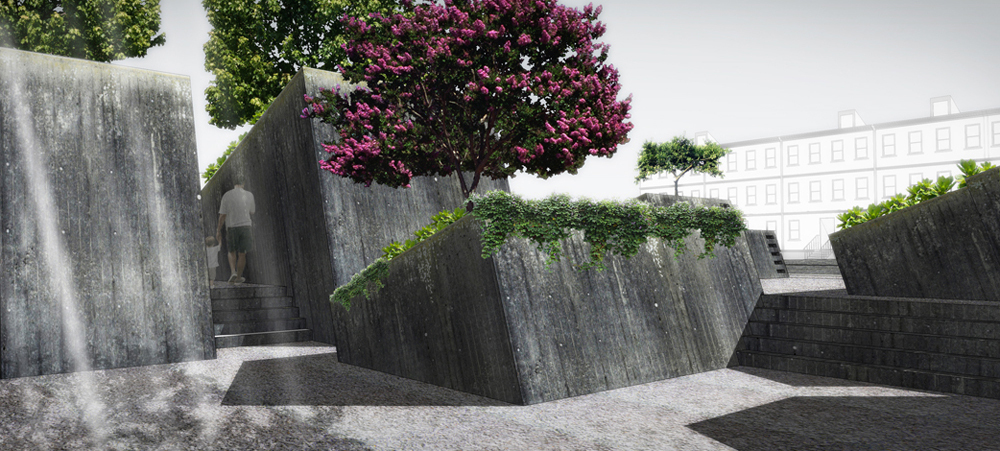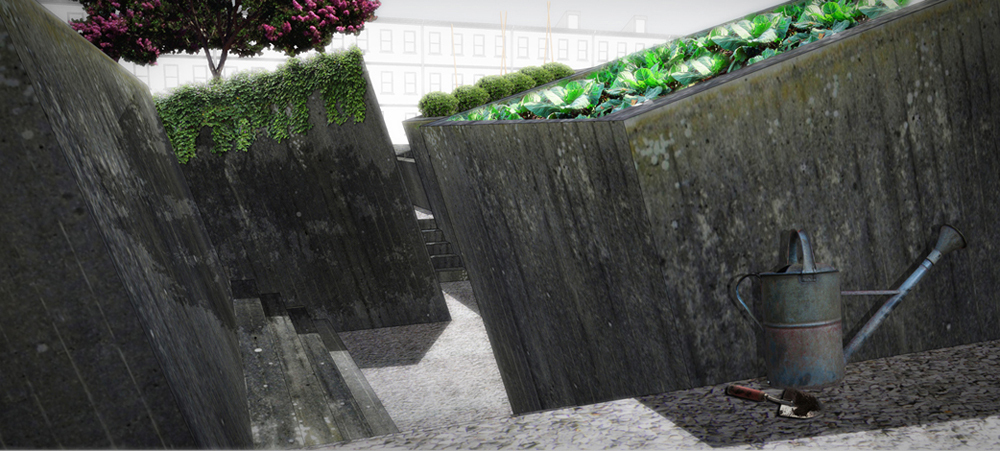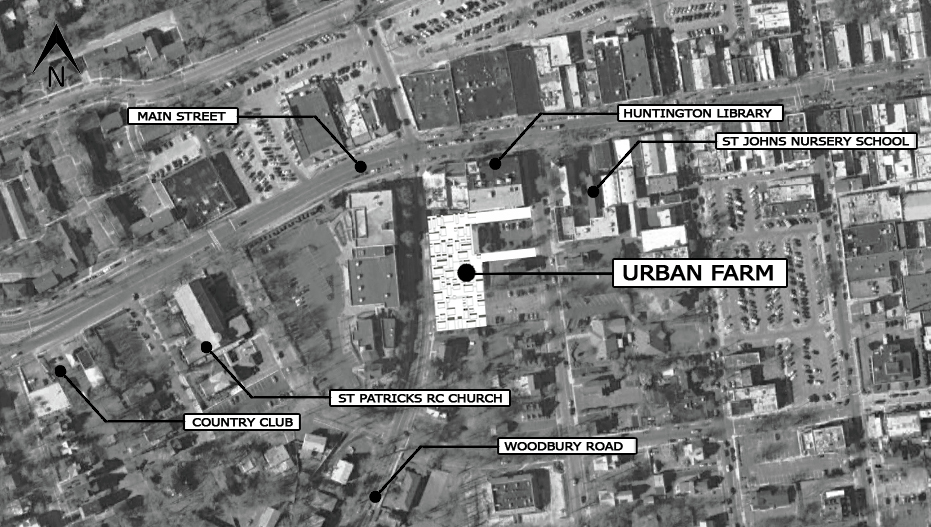Urban Farm Design for Dense Cities

Part park and part community garden, this beautifully-rendered project responds to the course concrete materiality of the city and the need to create connections amidst the impersonal skyscrapers that many denizens of New York inhabit.

The core of the project by New Zealand architect Tim Stephens (designed for Huntington, Long Island) is a series of planters, angled toward the sun, that both provide workable plots for residents to grow food locally but also define circulation spaces, terraced seating and a sense of balance between openness and enclosure.

Unlike a typical park, space is created architecturally – but unlike a building, landscapes inform the experience as well, which is primarily one of movement and interaction, not static occupation.
The idea is to divide the area into zones that smoothly connect with one another, ranging from small individual and group plots with small paths in between up to large, vegetation-intensive community planters with full-sized trees and a wide-open market space in the conceptual center of it all.

Adjacent pedestrian paths, walkways and sidewalks flow directly into the maze of new space created by the project, weaving it organically into its more rigorously linear urban surroundings. Despite all of this, though, there remains one big and unanswered question: is this defensible space that you would feel safe walking through at night? That might be the single largest remaining challenge faced by this otherwise innovative and inspiring modern ‘garden city’ design.

“After 8 years of working as a design architect, Tim has developed a reputation for producing design conceptions that transcend the clutter.
Tim studied and began his career in Auckland where he worked for leading New Zealand firm Warren & Mahoney for a number of years.
After a year working in Santiago, Chile, he moved to Brisbane, Australia, where he became registered and had the opportunity to work on a number of projects of international scale and complexity.”




